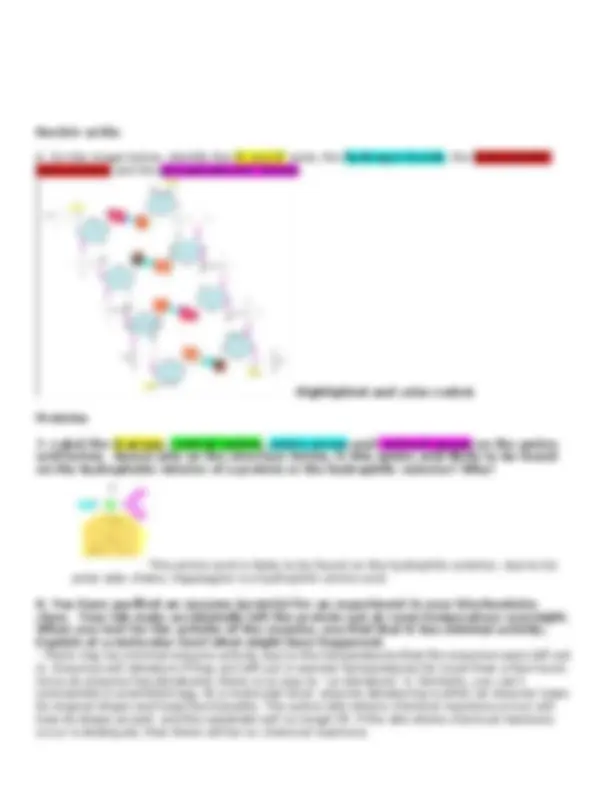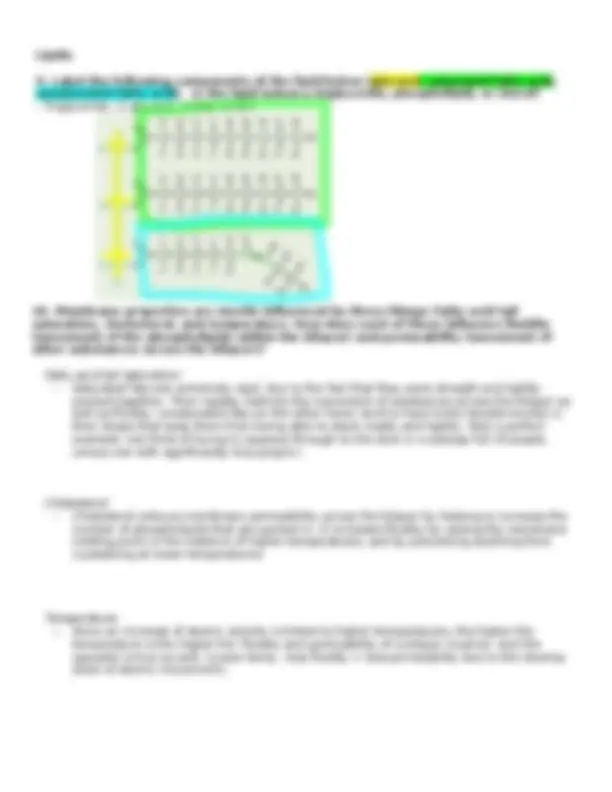




Study with the several resources on Docsity

Earn points by helping other students or get them with a premium plan


Prepare for your exams
Study with the several resources on Docsity

Earn points to download
Earn points by helping other students or get them with a premium plan
Community
Ask the community for help and clear up your study doubts
Discover the best universities in your country according to Docsity users
Free resources
Download our free guides on studying techniques, anxiety management strategies, and thesis advice from Docsity tutors
biological molecules ws from BIO211
Typology: Assignments
1 / 4

This page cannot be seen from the preview
Don't miss anything!



Biology 211 Name: Sam Tian Date: 9/29/ Biological molecules ICA
1. Complete the following table: Macromolecule Monomer Type of bond formed in the polymer Function Carbohydrates - Monosacchari des - Glycosidic bond (type of covalent bond) - Short-term energy storage - Structural support - Cell to cell communication Proteins - Amino acids (20 different aa) - Peptide bonds - Structural support - Catalyze enzymatic reactions - Cell transportation - Cell machinery (defense) Nucleic acids - Nucleotides - Phosphodies ter - Store genetic info. (DNA) - Make temp. copies of DNA for transl. (mRNA) - Carry amino acids/proteins around cell (tRNA) - Make ribosomes - rib. = aid protein synthesis (RNA) - Act as enzymes + catalyze chem. Reactions (ribozymes) Lipids - Glycerol - Fatty acids - Typically don’t form polymers - long-term energy storage - cell membranes - send signals/communi cate 2. Compare and contrast dehydration reactions and hydrolysis reactions. Define each and indicate whether energy is required or released.
3. If a cell were consuming a great deal of H 2 O, which types of reaction would be occurring most frequently in the cell?
Lipids
9. Label the following components of the lipid below (glycerol, saturated fatty acid, unsaturated fatty acid). Is the lipid below a triglyceride, phospholipid, or sterol?